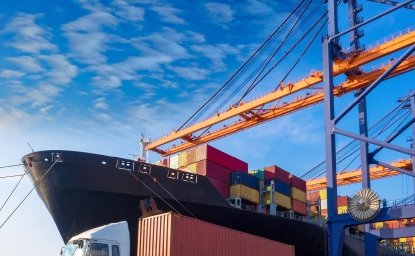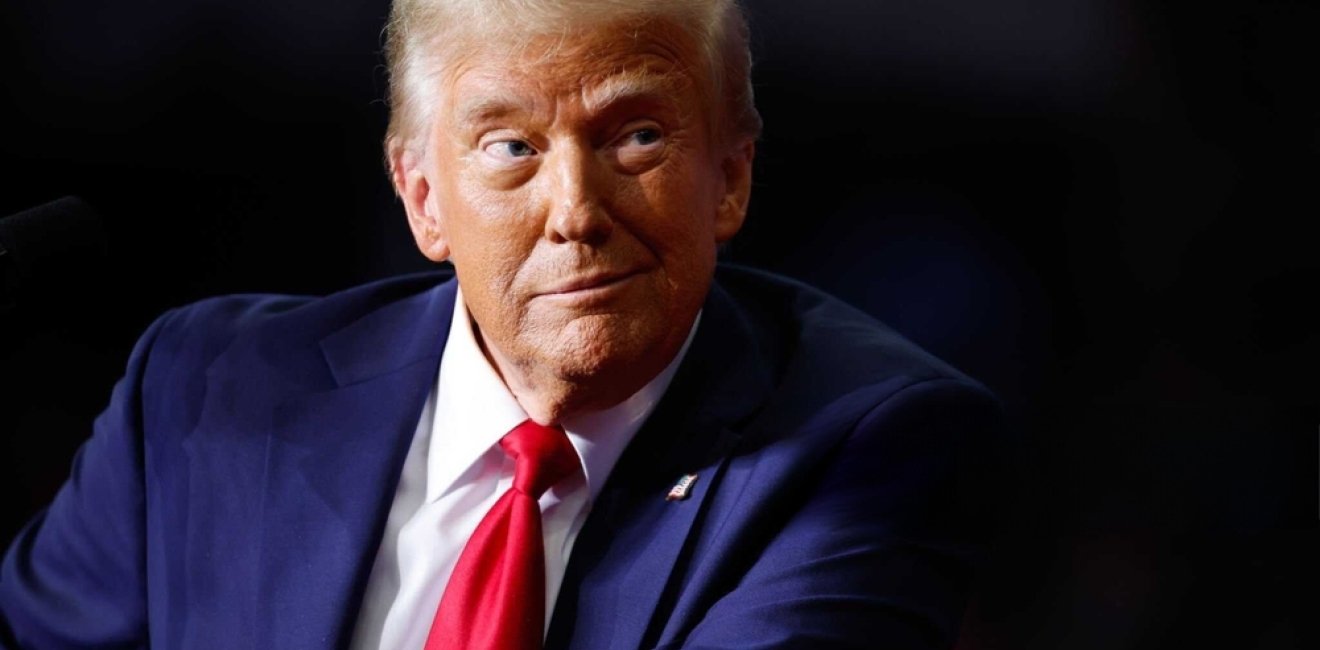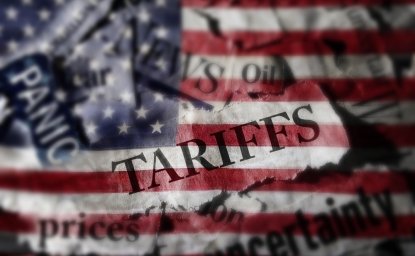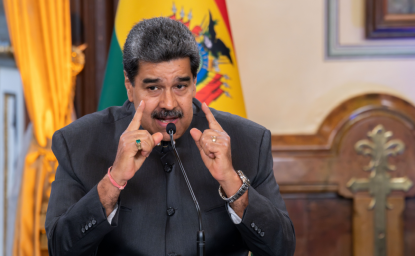The White House’s Official Tariff Announcement
On February 1, 2025, the White House released a fact sheet detailing President Donald J. Trump’s decision to impose tariffs on imports from Canada, Mexico, and China. According to the White House, these tariffs would be implemented as part of an emergency response to what they describe as an “extraordinary threat” posed by illegal migration and drug trafficking, particularly fentanyl. Under the International Emergency Economic Powers Act (IEEPA), the administration argues that this situation constitutes a national emergency. As a result, the U.S. would impose an additional 25% tariff on imports from Canada and Mexico and a 10% tariff on imports from China.
The White House justifies these tariffs as a means to alleviate what it considers a crisis driven by migration and fentanyl smuggling. The fact sheet also states that these tariffs will be lifted once the crisis is alleviated, but this raises the key question: What does an alleviated crisis look like? The fact sheet does not provide specific criteria or measurable benchmarks for when these tariffs might be removed.
Finally, the fact sheet presents an argument regarding trade dependence. It states that Canada’s GDP is 67% reliant on trade, Mexico’s GDP is 73% trade-dependent, and China’s GDP is 37% trade-dependent. In contrast, it highlights that only 24% of the US GDP comes from trade. The implication is clear: the United States, according to the administration, can withstand these tariffs better than its trading partners, while Canada, Mexico, and China will face greater economic pressure. This, in turn, suggests that these countries would be compelled to comply with US demands to take action on migration and the fentanyl crisis.
A noteworthy claim in the document is that the Mexican government has an alliance with drug trafficking organizations. This is a serious and broad accusation, as the fact sheet refers to “the government of Mexico” without specifying whether this refers to local, state, or federal authorities or particular individuals. The White House asserts that this alleged alliance facilitates the production and transportation of dangerous narcotics, ultimately leading to the deaths of hundreds of thousands of Americans. It frames this as a national security threat to the United States.
The Government of Mexico’s Response
In a publication on the Government of Mexico’s website, dated January 31, President Claudia Sheinbaum emphasized that the US imposition of a 25% tariff on Mexican imports would have severe economic consequences, particularly for American families in states like California, Texas, Florida, and Arizona. She reiterated Mexico’s readiness to take countermeasures while stressing the importance of US-Mexico cooperation under the USMCA. She also highlighted Mexico’s ongoing dialogue with the US on migration and security, emphasizing shared responsibility, mutual trust, collaboration, and respect for sovereignty.
In a statement on her official X account on February 1st, Sheinbaum firmly rejected the White House’s accusation that the Mexican government has ties to criminal organizations. She pointed out that a significant portion of the weapons used by these groups in Mexico originate from the United States. Additionally, she linked the opioid crisis in the US to the indiscriminate prescription of synthetic opioids by pharmaceutical companies, referencing legal cases against these firms. Sheinbaum advocated for cooperation between the US and Mexico, proposing the creation of a joint working group to address security and public health issues. She also directed Economy Secretary Marcelo Ebrard to implement a “Plan B”, which includes tariffs and non-tariff measures, if the United States officially implemented tariffs on February 4.
On the morning of February 3, President Sheinbaum announced via her official X account and later in her morning press conference that she had held a respectful conversation with President Trump. The discussion resulted in a temporary suspension of tariff implementations by both countries, contingent on the following stipulations:
- Mexico will reinforce its northern border with 10,000 National Guard (Guardia Nacional) members immediately, to prevent drug trafficking into the United States, particularly fentanyl.
- The United States will work on preventing the trafficking of firearms into Mexico.
- Both countries will begin bilateral discussions on security and trade.
- The implementation of tariffs will be paused for one month to allow for further negotiations.
That same day, President Trump took to X to reaffirm the agreement with Mexican President Claudia Sheinbaum, describing their exchange as a “friendly conversation.” His post signaled alignment with the stipulations Sheinbaum previously outlined, reinforcing the shared commitments between both administrations for at least the next month. In addition, Trump announced that negotiations would be led on the US side by Secretary of State Marco Rubio, Secretary of Treasury Scott Besant, and Secretary of Commerce Howard Lutnick, alongside senior Mexican officials
Analysis
The Temporary Deal between Mexico and the United States marks an uncertain moment in bilateral relations. The lack of clarity on what constitutes an “alleviated crisis” raises concerns about who defines success and how tariffs could be extended indefinitely, creating uncertainty for businesses and investors. While Mexico’s response under President Claudia Sheinbaum has been strategic, showcasing a multi-tiered approach, the specifics of her chosen counter-tariff option, “Plan B,” remain unknown, leaving open questions about Mexico’s negotiating power.
The deployment of 10,000 National Guard elements to Mexico’s northern border introduces logistical challenges, as their integration into heavily policed cities like Tijuana, Ciudad Juárez, and Nuevo Laredo have the potential to create tension with local law enforcement and the general population. Meanwhile, the US commitment to addressing firearm trafficking into Mexico is vague, and without clear accountability mechanisms, it risks becoming another unfulfilled promise. The one-month pause on tariffs does little to reassure the private sector, as investment uncertainty will likely stall economic activity. More importantly, what happens after the month ends? Will a long-term deal be reached, or will the cycle of short-term pauses continue?
Beyond trade, the formal US accusation that the Mexican government has alliances with drug cartels is an unprecedented diplomatic move, intertwining security and trade in a way that could set a dangerous precedent for future negotiations. Although President Sheinbaum dismissed further mention of this topic during her call with Donald Trump, when asked in her daily morning conference, it is important to monitor mentions of this topic in future negotiations, as its introduction could potentially influence the trajectory of US-Mexico relations. The high-level involvement of the Secretaries of State, Commerce, and Treasury underscores that this US strategy is focused on the pillars of security and commerce. The State Department’s renewed focus on Latin America suggests a recalibration of US policy in the region, something worth closely monitoring as well.
Finally, a critical omission from the Temporary Deal is the opioid crisis, where President Claudia Sheinbaum was right to highlight its roots in over-prescription within the US healthcare system. Rather than relying solely on law enforcement, both countries should establish a working group to address the crisis as a humanitarian issue.
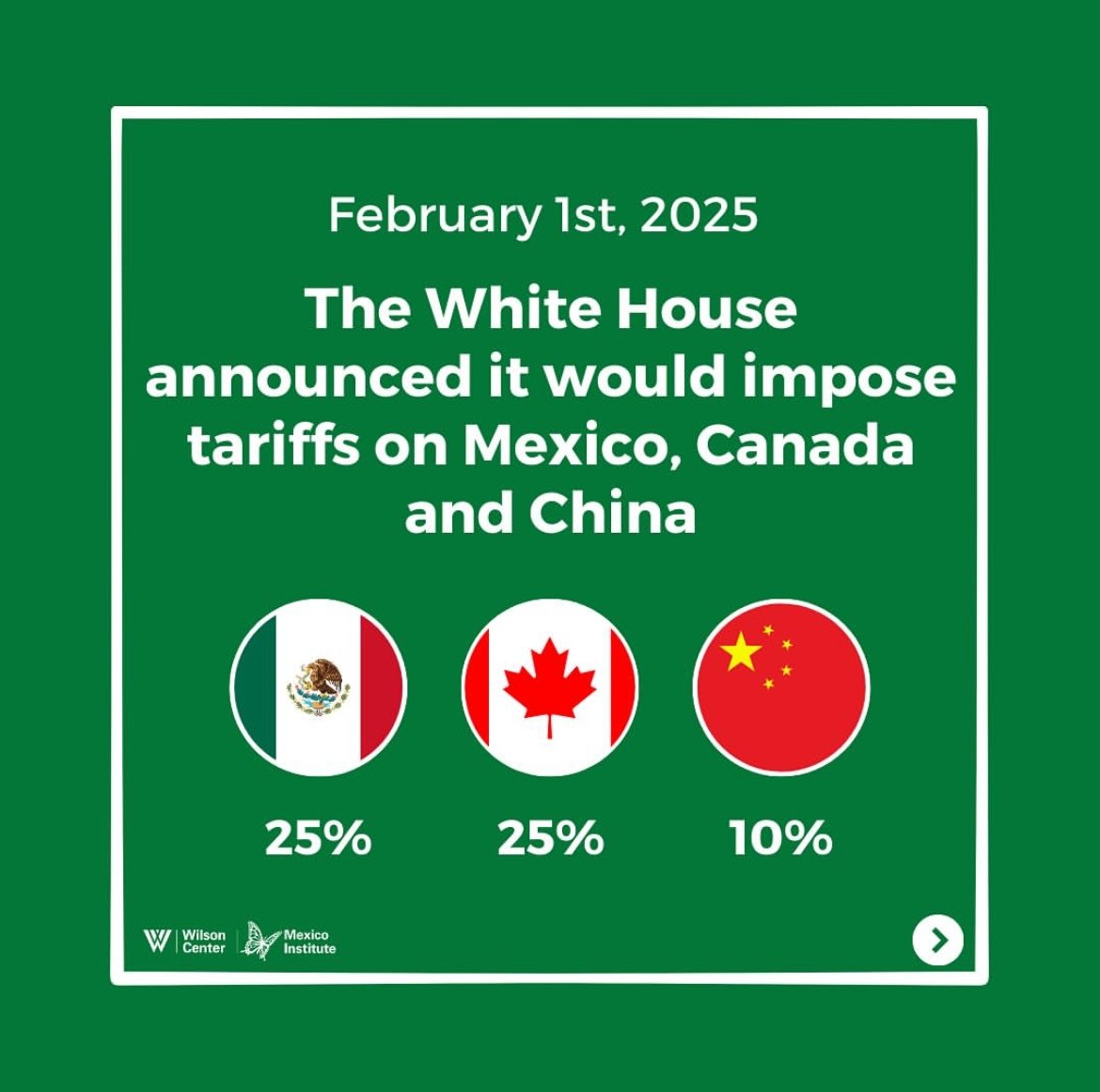
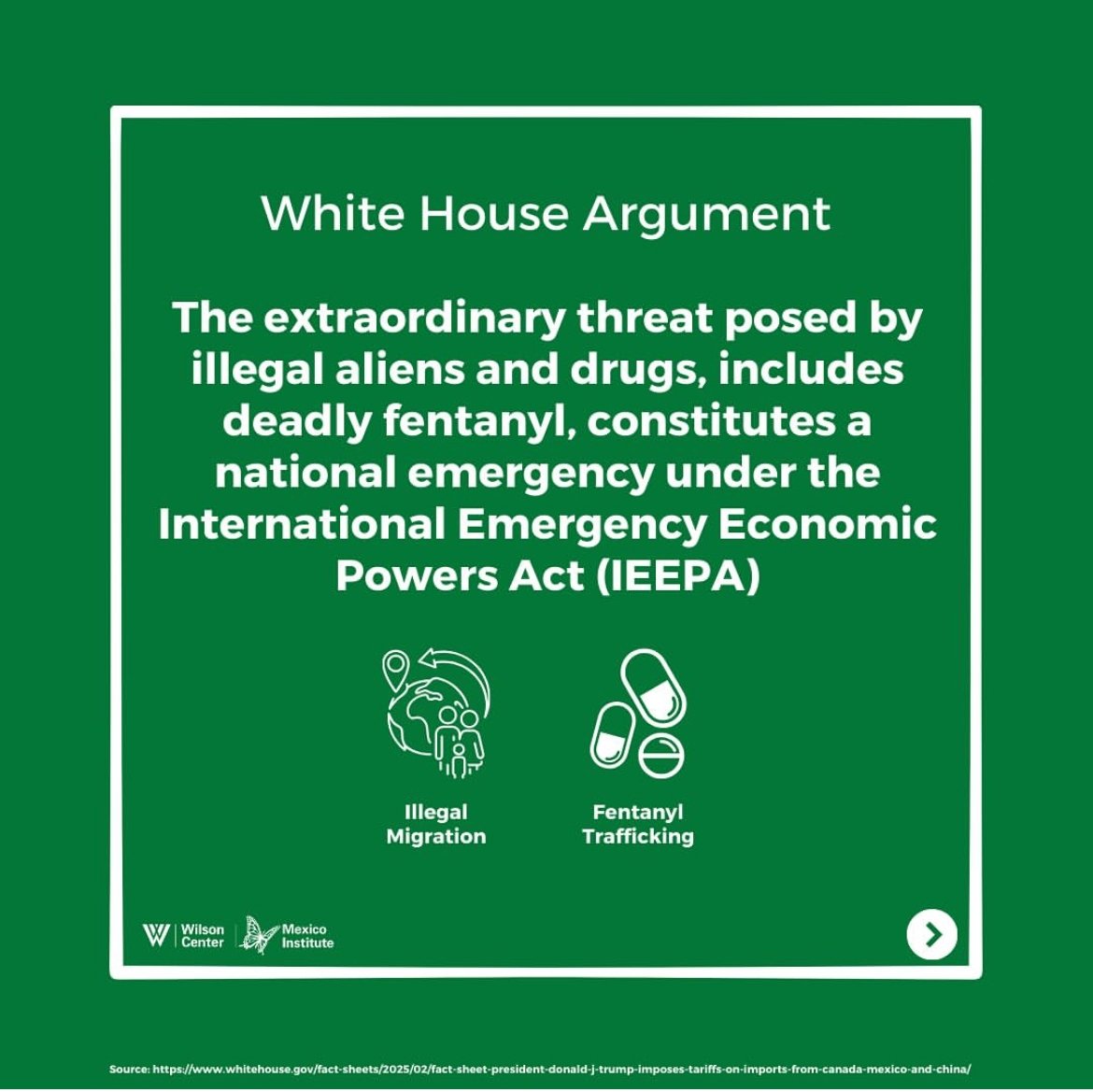
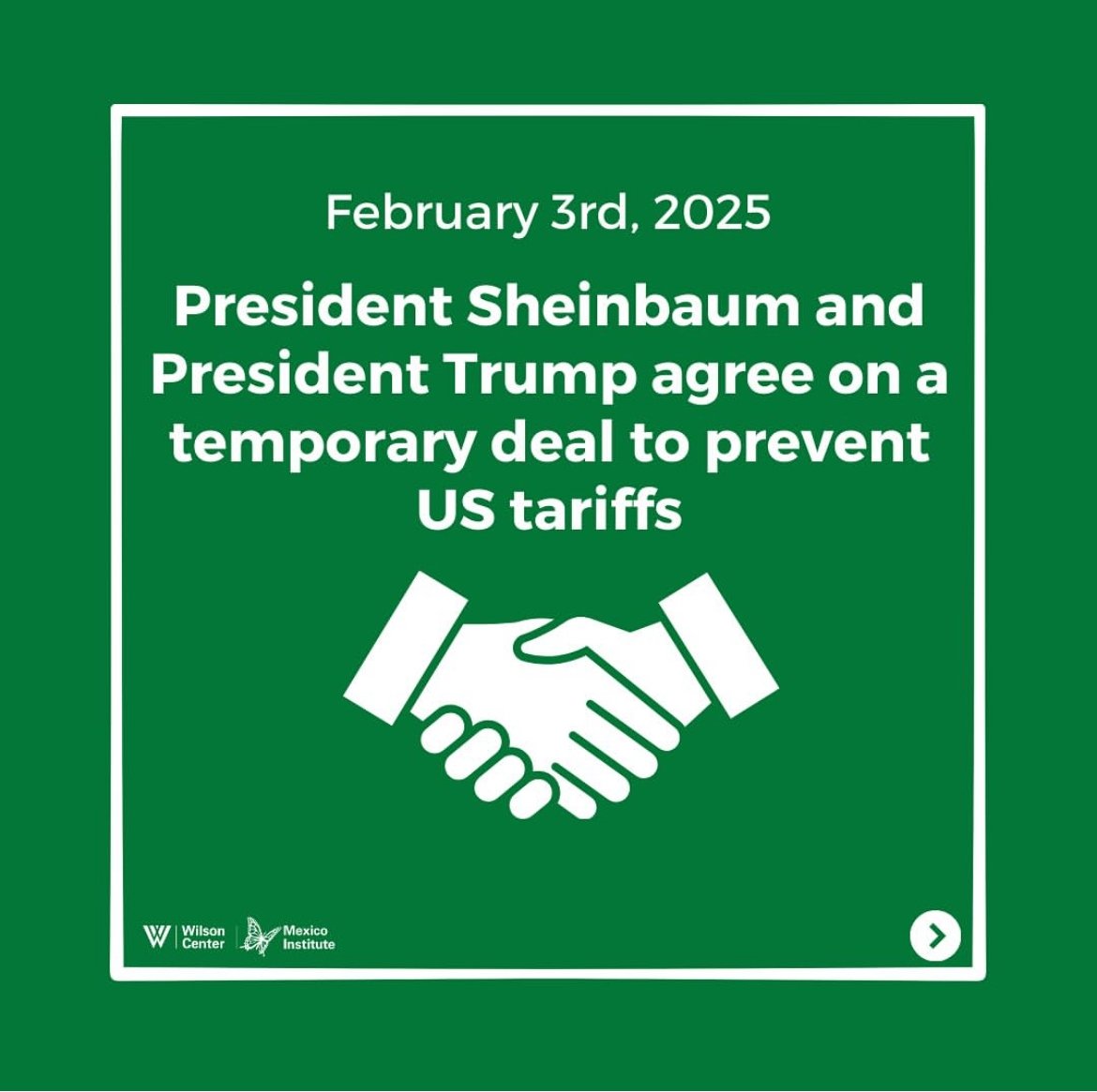
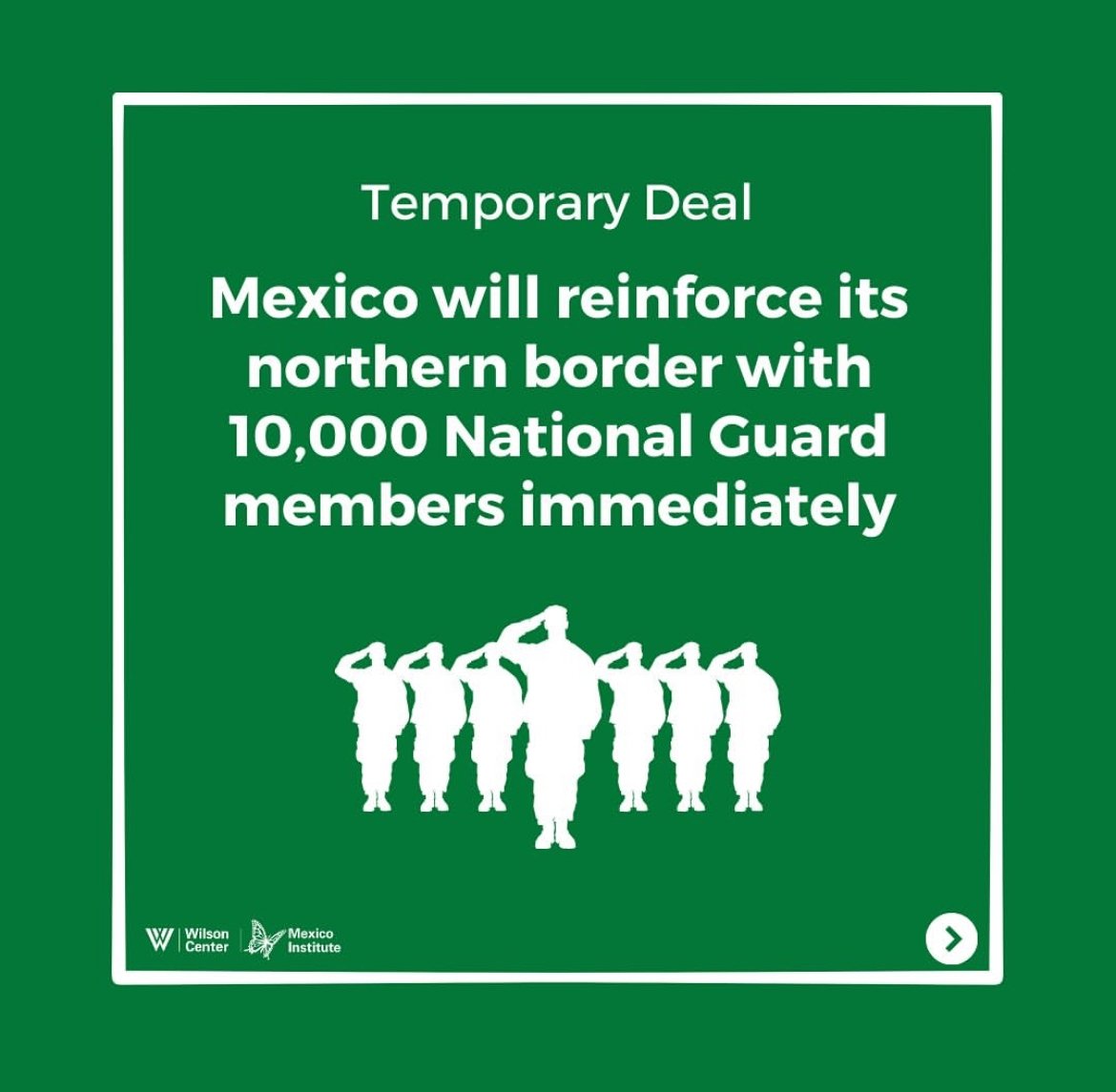
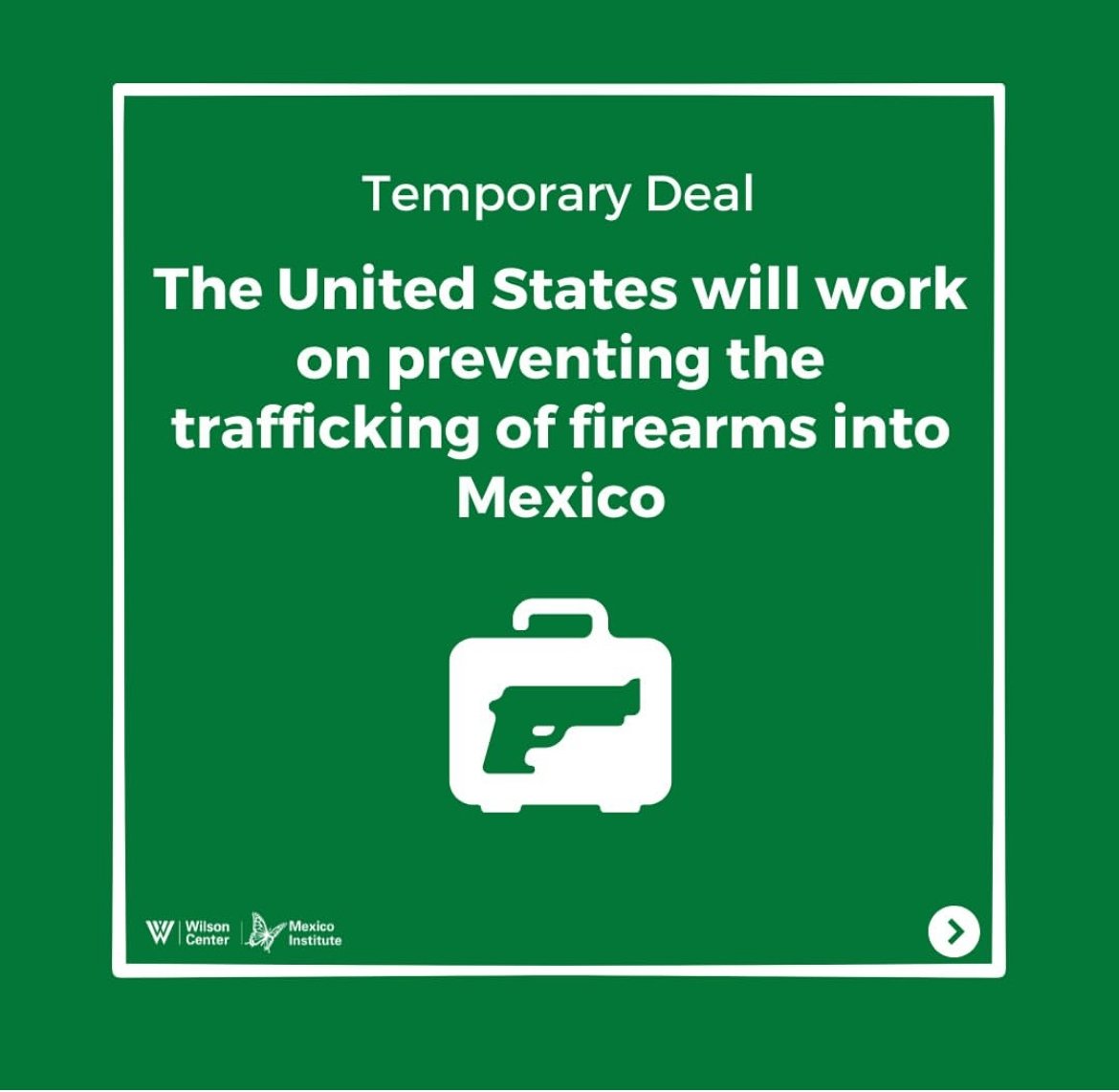
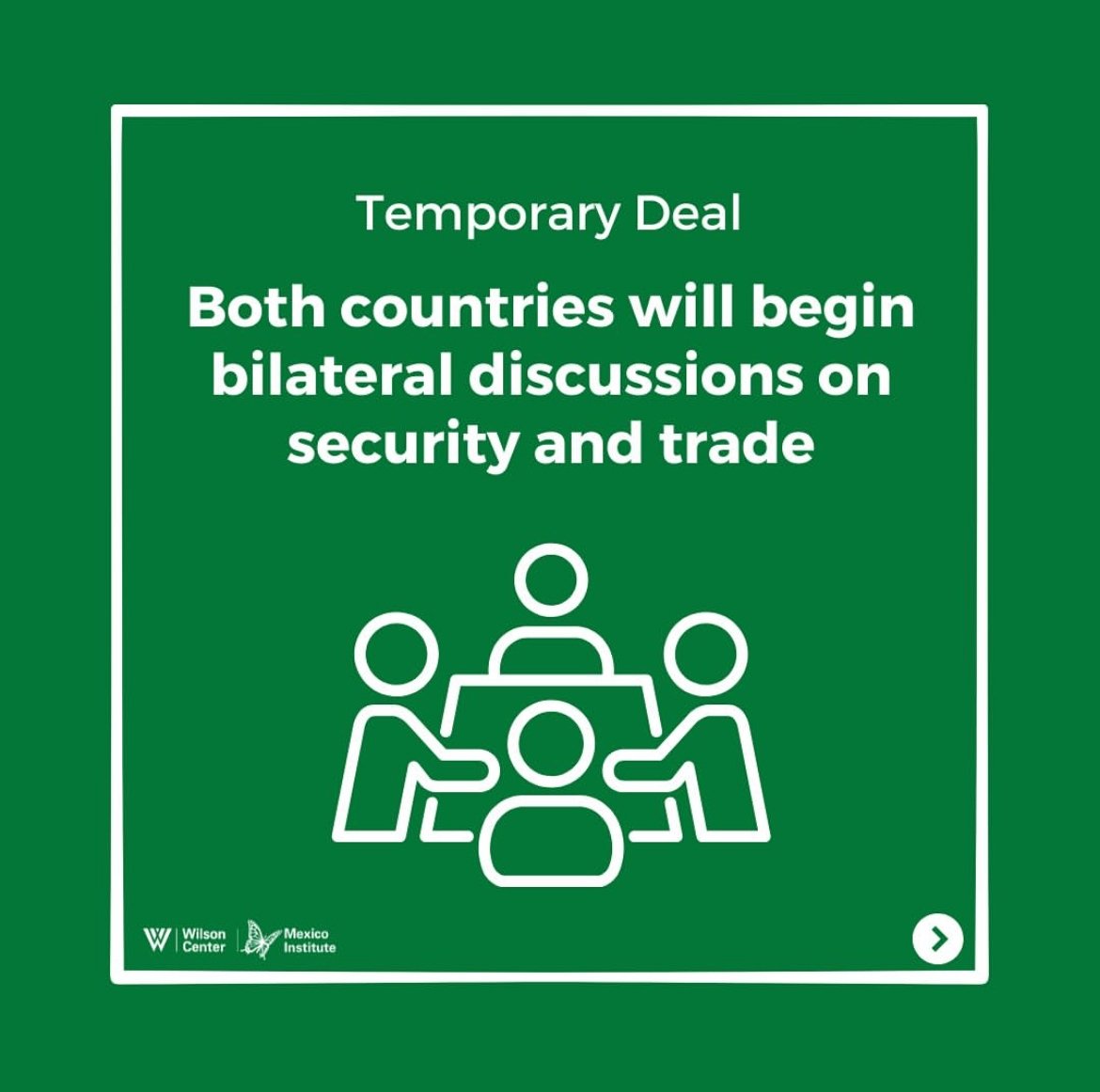
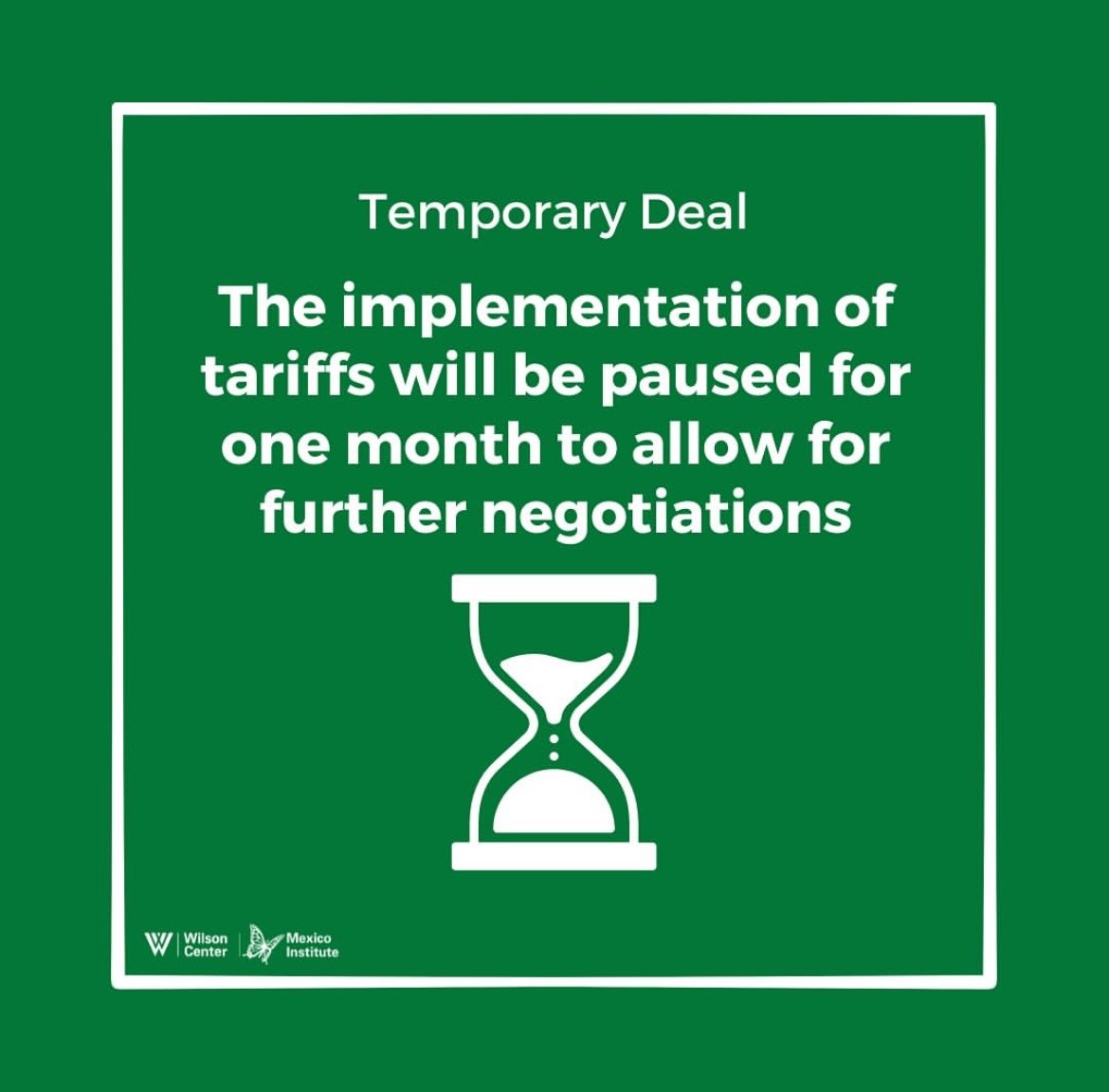

The White House announced it would impose tariffs on Mexico, Canada and China
.

The extraordinary threat posed by illegal aliens and drugs, includes deadly fentanyl, constitutes a national emergency under the International Emergency Economic Powers Act (IEEPA)
.

President Sheinbaum and President Trump agree on a temporary deal to prevent US tariffs
.

Mexico will reinforce its northern border with 10,000 National Guard members immediately
.

The United States will work on preventing the trafficking of firearms into Mexico
.

Both countries will begin bilateral discussions on security and trade
.

The implementation of tariffs will be paused for one month to allow for further negotiations
.
Author


Mexico Institute
The Mexico Institute seeks to improve understanding, communication, and cooperation between Mexico and the United States by promoting original research, encouraging public discussion, and proposing policy options for enhancing the bilateral relationship. A binational Advisory Board, chaired by Luis Téllez and Earl Anthony Wayne, oversees the work of the Mexico Institute. Read more

Explore More
Browse Insights & Analysis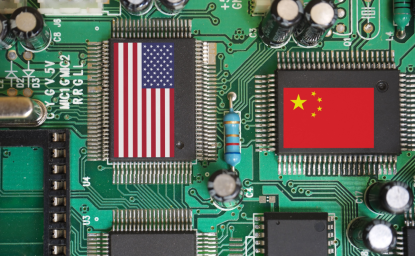
360° View of How Southeast Asia Can Attract More FDI in Chips and AI
